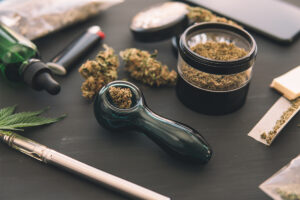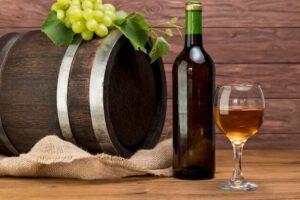It’s no secret that most of us are incapable of cooking meals for more than 3 people, and that we are more or less getting ready for take-out today. So, is it time for you to learn to cook? Not everyone wants to be a chef, but everyone wants to be able to cook something when they want to, without having to make a reservation or order the online delivery menu. That’s why this guide will teach you how to cook many different recipes, and best of all, from scratch and with very little effort.
The Bisi bele bath is a traditional dish in the area of Seram, Indonesia. The most popular way to cook Bisi bele bath is by adding a piece of chicken or beef. Bisi bele bath is also sometimes prepared in different variations. There are a lot of recipes for it. Nowadays, it is also popular in the capital city of Indonesia.
Bisi bele bath, the traditional recipe that is common among the Gela in the south of Sri Lanka, is considered as a very healthy and nutritious dish. In addition to being delicious, it is also believed to have medicinal properties. Bisi bele bath has a unique flavor and aroma.
In Karnataka, Bisi bele bath is renowned for its one-pot vegetarian rice meal. Bisi bele bath means “hot lentil rice” in Kannada. Bisi denotes a spicy meal, bele denotes a lentil or dal, and bath denotes a rice-based dish. This meal combines dal and rice with veggies and spices that have been freshly roasted. Everyone makes Bisi bele bath using freshly ground masala or premade shop bought masala in restaurants and at home. Because of its flavor and fragrance, bisi bele bath is one of my favorite rice meals.
Bisi bele bath is a rice dish similar to sambar. The masala is the only difference. Freshly ground spices masala is used in both, but the ingredients are different, with the exception of khus-khus (poppy seeds) and dried coconut (copra), which are used in the bisi bele bath but not in the sambar rice. Marathi mogu (badi laung), which is used in bisi bele bath, is an essential element that I have included in this. You may find byadgi dry red chilies in Karnataka, which provide a nice color, but I used Kashmir chillies instead. It’s often referred to as sambar rice in Chennai. This meal was previously exclusively available in restaurants, but one of my friends generously shared the recipe with me. Since then, I’ve been making Bisi bele bath according to my preferences.
Time to prepare: 15 minutes (excluding soaking time)
Time to cook: 45 minutes
Karnataka cuisine
Medium spiciness
Serves: 4
Ingredients
Method
Bisibelebath is made in four stages.
a. Getting the rice and lentils ready to eat
b. Using masala powder to cook the veggies
c. Using rice, lentils, and veggies together
c. Adding ghee to the mix
-
- Cut the drumsticks into 3 inch pieces and cut all of the veggies together, except the shallots (sambar onion), and set aside.
- The cashew nuts should be split in half. You may even utilize them in their entirety if desired.
- Soak the tamarind for 30 minutes in boiling water. Hand-squeeze the tamarind, filter, and set aside the pulp (tamarind water).
- Soak the rice and dal in water for 30 minutes after washing them. Drain the water and set it aside.
- While the rice was soaking in water, I added raw or roasted without shell peanuts.
Getting the rice and lentils ready to eat
-
- To prevent froth, cook lentil/dal with water and turmeric powder in a pressure cooker or a pot with a little 1/2 teaspoon of oil. Cook the dal until it is soft and mushy, or mash it thoroughly and set it aside. While the dal is boiling, do not add salt.
- Cook the rice in the same pressure cooker or in a separate pot with enough water and set aside when done. The rice should be soft and overcooked.
Spices (Bisi bele bath Masala/powder) are roasted.
-
- To make Dried Masala Roast, heat oil in a skillet and add coriander seeds, dry chilies, chana dal, and other spices one by one. Continue to stir and roast thoroughly.
- Finish with khus–khus, hing, and shredded coconut. You may even roast them one at a time. To prevent burning, roast them over a low heat while stirring often.
- Allow to cool before grinding to a fine powder or a coarse powder.
Masala powder is used to cook the veggies (Bisi bele bath powder)
-
- Take a larger or broader pot and add all the veggies one by one, except peas and bell pepper, 3 cups of water, and boil or suate vegetables in 2 tsp oil for 3 minutes, then add water, and simmer for 10 minutes with the top closed.
- Boil for 7 minutes with 1 cup tamarind water and 1 teaspoon turmeric powder.
- Add the freshly ground masala powder, more water, and simmer for 15 minutes, or until the rawness of the tamarind has vanished.
- Cook on medium heat with the lid covered until the spices are fully cooked and the sambar has a pleasant fragrance.
- It’s similar to making sambar without the lentils; the masala mixture must be well cooked before adding the dal and rice.
Using rice and dal together
-
- Cook for 5 minutes on medium heat with the dal, peas, and bell pepper mixture.
- Mix in the rice and gur well.
- More liquid will be present at this point; the rice will absorb it all later.
- Reduce the heat to low and simmer for 12 to 15 minutes, or until the masala and flavors have been absorbed by the rice.
- Stir it periodically to prevent it from sticking to the bottom and being burned.
Tempering
- In a kadai or saucepan, melt the ghee and add the mustard seeds, dried chilies, curry leaves, and cashew nuts. Cook until the cashews become golden brown, then add the hing and turn off the heat.
- Pour in the bisi bele bath, stir well, cover, and cook for 5 minutes before turning off the heat. Add a few coriander leaves now and stir thoroughly with the rice mixture. Allow it to rest for 10 minutes with the lid closed, or serve right away.
- While serving, drizzle it with more ghee. Bisi bele bath is best served with chips or fried potatoes. Some people eat it with raitha and boondi combination. Bisi bela bath was served with papad, raitha, and a combination.
- Forget about the calories and savor every bite.
Notes
- If you want the rice to be whole, don’t cook it too long.
- Instead of basmati rice, use ponni rice, sona masoori rice, or parboiled rice.
- Add the necessary quantity of water to get the desired consistency. It should have a smooth, porridge-like texture.
- Reduce the chillies if you want it to be less spicy or if you’re serving it to kids.
- If the tamarind you’re using is very dark, you’ll need to add a little extra turmeric powder to get the desired color.
- You may use whatever veggies you like, depending on your preferences.
- Fresh coconut may be substituted with dried coconut.
- If using ready-made concentrated tamarind paste (1 1/2 teaspoon to 2 teaspoons, depending on flavor), add 1 cup more water.
- You may alter the amount of ghee according to your preferences and needs.
- If you believe there was too much water when you combined the rice and dal, don’t worry; it will all be absorbed in the end, and when it cools down, it will be dry. The sambar rice must be liquid, and the rice must be mushy enough to melt in your tongue.
Bisi bele bath is an old recipe from Igbo land that is prepared especially during the months of January and February. The dish is made from wheat flour. The main ingredients are the wheat flour with pork, yam, eggs, and seasoning and it is cooked slowly in a pot over an open fire.. Read more about mtr bisi bele bath recipe and let us know what you think.
Frequently Asked Questions
What is the meaning of bisi bele bath?
Bisi bele bath is a traditional Turkish dessert.
Is bisi bele bath good for health?
Bisi bele bath is a traditional herbal remedy that has been used in India for centuries. It is said to have many health benefits, including the ability to improve digestion and relieve constipation.
Is khichdi and bisi bele bath same?
Yes, they are the same dish.



